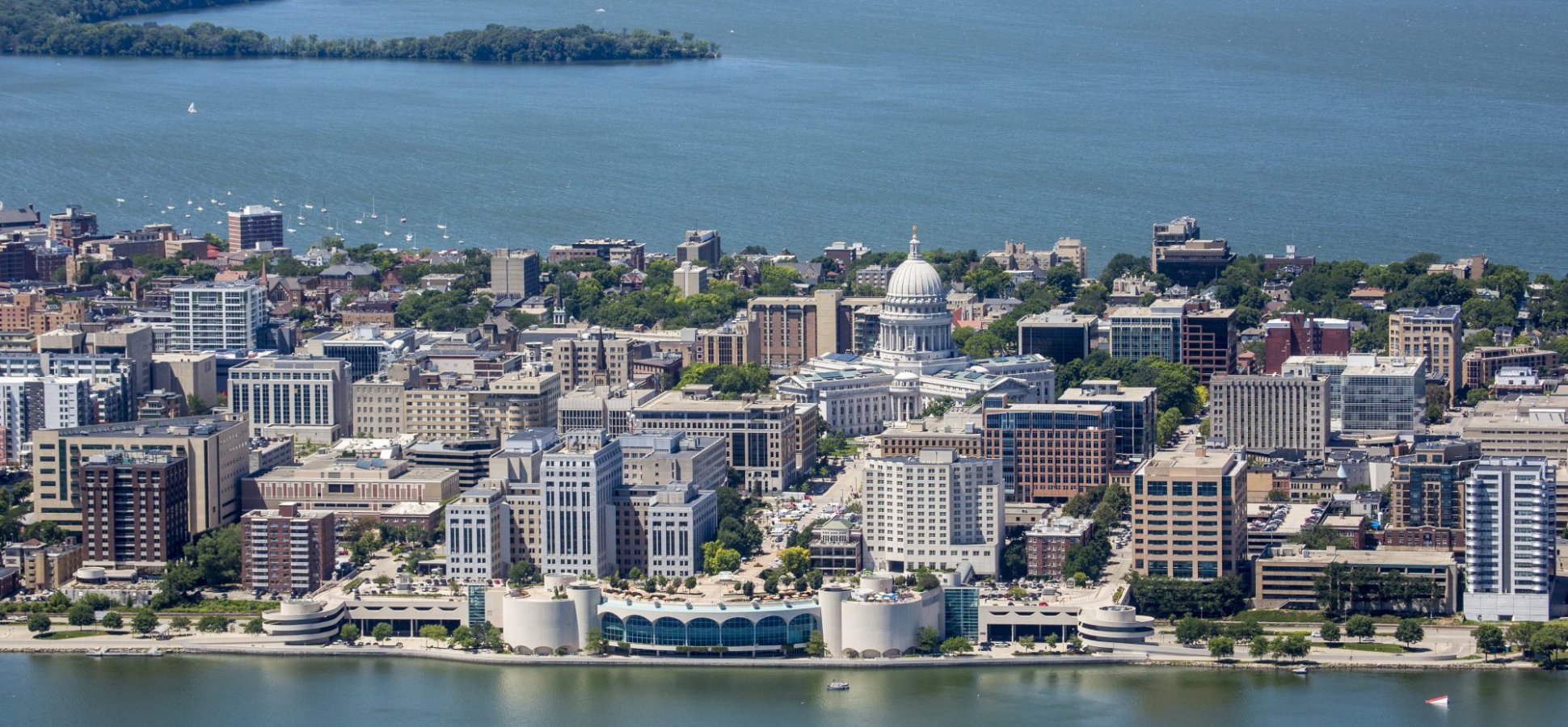Citizen wisdom from the beginning of the “environmental decade”
In 1970, a Madison citizen activist publicly questioned the idea that “growth is good.” He asked why people played a secondary role to the automobile and airplanes. He criticized our “perverted sense of individualism” in which “everyone has the right to make money in land development regardless of the cost to the community.” He argued that bigger is not better– instead, he said, “more is less—less open space, less clean air, and less clean water.” He recommended “making an effort to build environmental considerations into every level of decision-making” and that we “enforce existing local and state pollution laws and write new ones to fill gaps and correct deficiencies.” Imagine that! Read more below…
It’s too bad that in the next five decades, Madison and Dane County leaders largely ignored this citizen’s wisdom, shared by many in the early 1970s, including some respected leaders such as Senator Gaylord Nelson. The city sprawled uncontrollably and is much more greenwashed by corporations and developers now than it was then. Is it any wonder that our lakes are now permanently poisoned? And who suffers the most negative consequences, while the rich here get richer, and the environment is toxified and destroyed? People of color and low income people.
City’s Environment Bad, Citizens’ Group is Told
By Franklin W. Iossi, Wisconsin State Journal, March 24, 1970
What’s the environmental state of Madison?
Painfully bad, David W. Stewart, president of Capital Community Citizens, said Monday night.
The environmental group’s leader touched on Madison’s problem sectors, but examined more closely why problems exist and what is needed to begin to alleviate them.
The environmental report, which the organization plans to give annually, was presented to group members and the public at First United Methodist Church.
Stewart mentioned Madison’s transportation problem. He said citizens and decisionmakers “see the issue in terms of cars and roads and parking lots and airports and buses and railroads—the ingredients which interact with people and neighborhoods and air and water and trees and urban developments of all kinds.”
He also indicated part of the problem is the secondary role people play to the automobile.
Visual wounds abound in the city, he said.
“An environmental wound is what you get when you drive out to your favorite Dane County picnic spot in the spring and find a billboard in the next field announcing: “SUBDIVISION LOTS FOR SALE. CALL__________REALITY,” he said.
Inside the city, he said, the wounds are often caused by national franchises, who seem to operate under the philosophy that if it’s good enough for Newark, it’s good enough for Madison.
Stewart’s nomination for the worst visual blight in Madison is the shopping center. He suggested the mayor, the governor, and other public officials refuse to cut ribbons at opening day ceremonies for such “crass monstrosities.”
His reasons for existing environmental conditions were lead by “mindless boosterism,” which he said tells us that if its growth, it’s good, all good and nothing but good. He noted that in extolations of growth, the word “bigger” is always followed by “better.”
Mindless boosters, said Stewart, have not learned the new environmental math. It says that more is less—less open space, less clean air, and less clean water.
He mentioned a recent study which showed the per capital costs of city services tend to increase as population increases.
The Madison Airport expansion issue was questioned. Stewart noted a favorite argument for the expansion. It says “bigger, faster, larger, and dirtier airplanes must be accommodated in Madison.”
Why, he asked, don’t the citizens say they are more interested in healthy people than in healthy airplanes?
He also criticized the public acceptance and approval of a “perverted sense of individualism” which says everyone has the right to make money in land development regardless of the cost to the community.
Stewart’s proposals for halting environmental blight centered on one point: concerned efforts by citizens.
His ideas included confrontation of the idea that growth is good and making an effort to build environmental considerations into every level of decision-making.
Two important recommendations were simple: enforce existing local and state pollution laws and write new ones to fill gaps and correct deficiencies.

